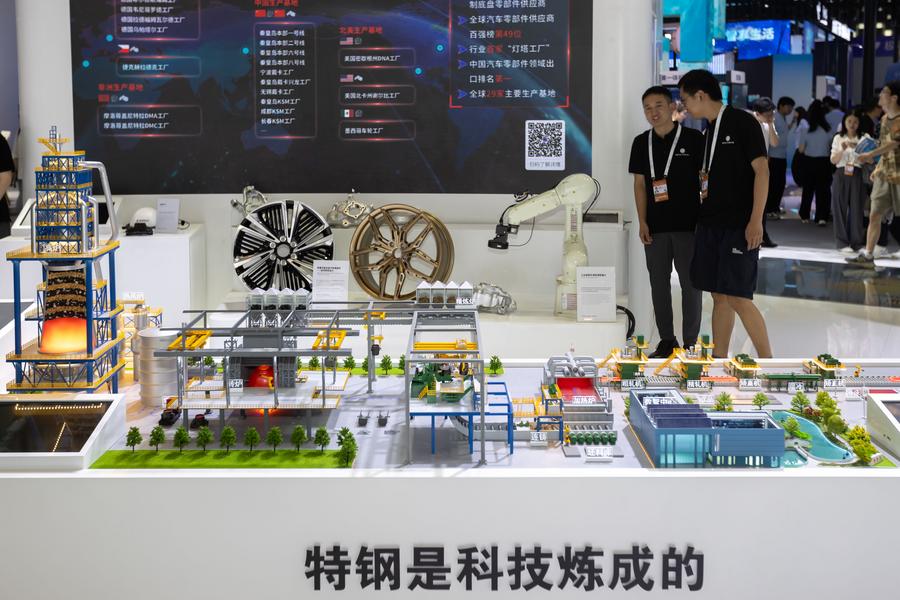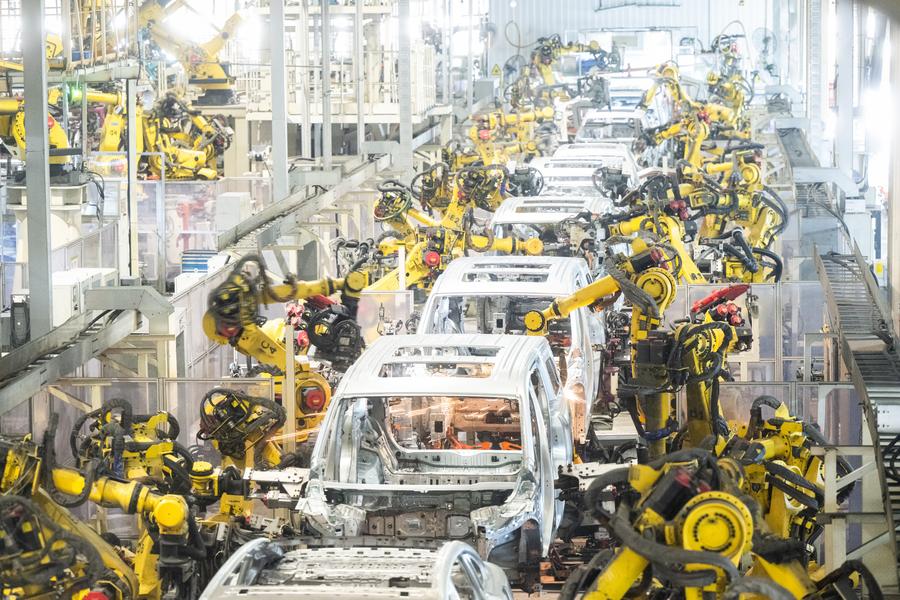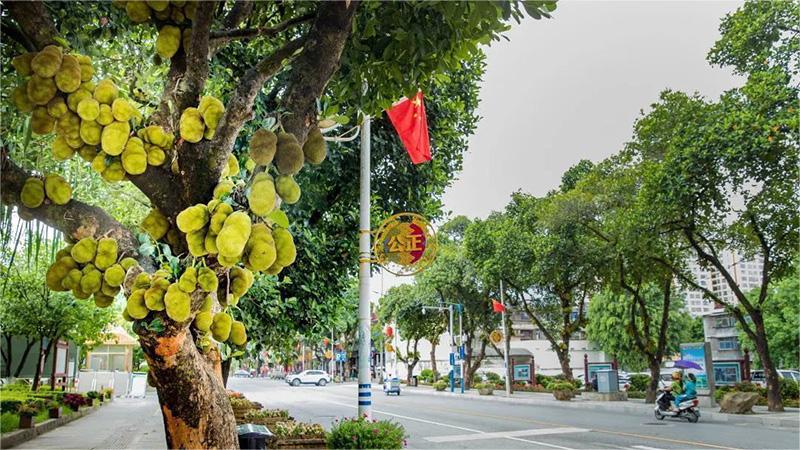Policy support prevents China's industrial profit growth curve from flattening

This photo provided by Dalian Shipbuilding Industry Co., Ltd. (DSIC) shows a domestically developed liquefied natural gas (LNG) carrier with a payload capacity of 175,000 cubic meters being launched in Dalian, northeast China's Liaoning Province on May 27, 2024. (DSIC/Handout via Xinhua)
BEIJING, July 13 (Xinhua) -- In Dalian Bay, a modern equipment manufacturing base in northern China, hundreds of workers are working on a cargo containment system for a large liquefied natural gas (LNG) carrier, a flagship China-made vessel that sells well abroad.
Dalian Shipbuilding Industry Group Co., Ltd, the manufacturer in Liaoning Province, currently holds orders for 15 such large LNG carriers that can meet the storage and transportation demand at ultra-low temperature of minus 163 degrees Celsius, with delivery dates running up to 2028, said Mao Haibo from the company's LNG operating department.
An epitome of China's high-end equipment, the LNG vessels have remained competitive globally as they demand precision manufacturing technologies and have high added value. Together with aircraft carriers and large cruise ships, it is known as the "three jewels in the crown" of the shipbuilding industry.
Driven by such cutting-edge technologies, China's equipment manufacturing sector posted a profit gain of 11.5 percent year on year in the January-May period, driving up the country's overall industrial profit by 3.6 percentage points as the largest contributor.
Electronics, transportation equipment and auto manufacturing were other main engines of industrial profit growth, while the raw material manufacturing sector came in as the major drag, with profits of the mining, fossil material processing and component manufacturing industries suffering major losses, according to the National Bureau of Statistics (NBS).
In general, the profits of China's industrial enterprises have posted slower growth, with the figure for the first five months down by 0.9 percentage points from that for the previous four months to 3.4 percent year on year.

People look at a model of smart factory at the booth of CITIC Group during the 2024 World AI Conference in Shanghai, east China, July 4, 2024. (Xinhua/Wang Xiang)
PINPOINTING CAUSES
Shen Jianguang, vice president and chief economist with JD.com, took the rising expenses mainly in raw materials, labor and manufacturing expenses as the direct cause, as the operating cost rate of industrial firms, measured by the ratio of operating costs to operating revenue, stood at 85.34 percent, a record high since November 2017.
But the fundamental causes, in Shen's point of view, could be more related to insufficient demand, low prices, and inadequate bargaining power, which have combined to squeeze on the profit margins.
Judging from the overall economic performance since last year, Mao Zhenhua, co-director of Renmin University's Economic Research Institute, said that the lack of demand, especially the lack of consumer demand, is tough, which manifests in lingering low prices and the low utilization rate of production capacity and might further constrain investment and production.
To break this dilemma, a meaningful rise in the final consumption demand is key, Mao said.
NBS data showed that retail sales of consumer goods in May expanded 3.7 percent year on year to top 3.92 trillion yuan. The figure rebounded by 1.4 percentage points from in April, but is far behind the growth rate of more than 8 percent in the pre-pandemic 2019, he noted.
Lian Ping, president of China Chief Economist Forum, regarded the sluggish real estate industry as the biggest constraint on the Chinese economy and demand.
He said that the decline in real estate investment has put constrains on the upstream and downstream sectors, dragging down gross domestic product (GDP), fixed asset investment and consumption by different degrees in the first half of the year.
Specifically, as of the end of June, the contribution rate of real estate investment to nominal GDP fell by 39 percent, while the growth of fixed-assets investment and retail sales were slashed by four percentage points and 4.7 percentage points respectively.

Robots are seen at an assembly line of Voyah, a Chinese luxury electric auto brand, in Wuhan, central China's Hubei Province, April 1, 2024. (Xinhua/Xiao Yijiu)
PRO-GROWTH MEASURES
To curb the deceleration of industrial profits, all-out efforts have been made by both the government and enterprises.
In March, China pledged a fresh round of large-scale equipment upgrades and trade-in of consumer goods, part of efforts to boost immediate domestic demand and facilitate sustained economic growth in the long run.
According to a relevant action plan, equipment upgrades for energy conservation and emission reduction, ultra-low emissions, safe production, digital transformation and intelligent upgrading shall be encouraged to not only boost investment but also promote an industrial shift toward high-end, green and intelligent manufacturing.
To speed up the drive, the country established a re-lending program worth 500 billion yuan in April to promote technological innovation and industrial upgrades, designating 100 billion yuan to boost the growth of tech firms specifically.
Li Chao, chief economist with Zheshang Securities, believed that large-scale equipment updates have begun to narrow the declines in profit growth of related upstream raw material processing enterprises, and soon a positive impact will spill over to upstream resource products, possibly generating higher trade volume and raising prices.
As for the trade-in of consumer goods, sectors from automobile, home appliance to other durable goods are expected to benefit most.
"China has a huge stock in home appliance that needs to be replaced, and the mechanical and electrical equipment in many enterprises and institutions are still in use beyond their safe service life. The trade-in policy has opened up new market," said He Haifeng, general manager of retail at Haier Smart Home China.
A number of banks have stepped in with consumer loan products as catalysts. The proportion of loans used for trade-in consumption climbed notably especially in the spheres of automobiles, home appliances, and home decoration, according to Nathan Chow, senior economist at DBS Bank. "And the trade-in policy has boosted car sales during the traditional off-season of May and June," Chow said.
To ease the drag and pump up the real estate, China on May 17 announced new policies to stimulate home purchases, ranging from lower minimum down payment ratios to the cancellation of mortgage rate floors for first and second homes.
Moreover, a re-lending facility will be established to support local state-owned enterprises to use those funds to buy commercial homes for affordable housing. A white list mechanism also seeks to help cash-strapped developers access credit, complete housing projects, and ensure homes are delivered to buyers.
Other measures to stimulate consumption include expanding visa-free transit policy, relaxing vehicle purchase restrictions, and encouraging the creation of new consumption scenarios in multiple sectors such as tourism, automobiles and electronics.
Despite all these efforts, analysts maintain that further reform and greater opening up are necessary to boost corporate confidence. For instance, a market environment securing fair competition for all types of business entities will be more than welcome.
Shen has called for strengthening policy support for private firms to better meet their financing demand and give full play to private enterprises' sci-tech innovation capabilities to promote digital transformation and technological transformation.
It is important to speed up the development of a unified national market across the country and provide more solid institutional guarantees concerning property rights protection, market access, fair competition and social credit to ease the costs of business operation, Shen noted.
(Xinhua reporters Wang Bingkun, Zhang Boqun, Ding Le and Wang Jingyu also contributed to the story.)
Photos
Related Stories
- AI Vibes: China's new energy industry aligns with green shift, economic globalization, benefiting world
- China's industrial profits up 3.4% between January-May, but recovery deemed uneven
- ‘Future industries’ are the way to weather foreign competition, suppression
- Surge in ship orders ups China's foreign trade
- Industry experts urge cooperation toward a greener future
- New energy-storage industry booms amid China's green drive
- China's road logistics price index flat
- China's home appliance giant Haier inaugurates industrial park in Egypt
- Development of emerging industries creates new job opportunities
- China's industrial output up 6.1 pct in Q1
Copyright © 2024 People's Daily Online. All Rights Reserved.









